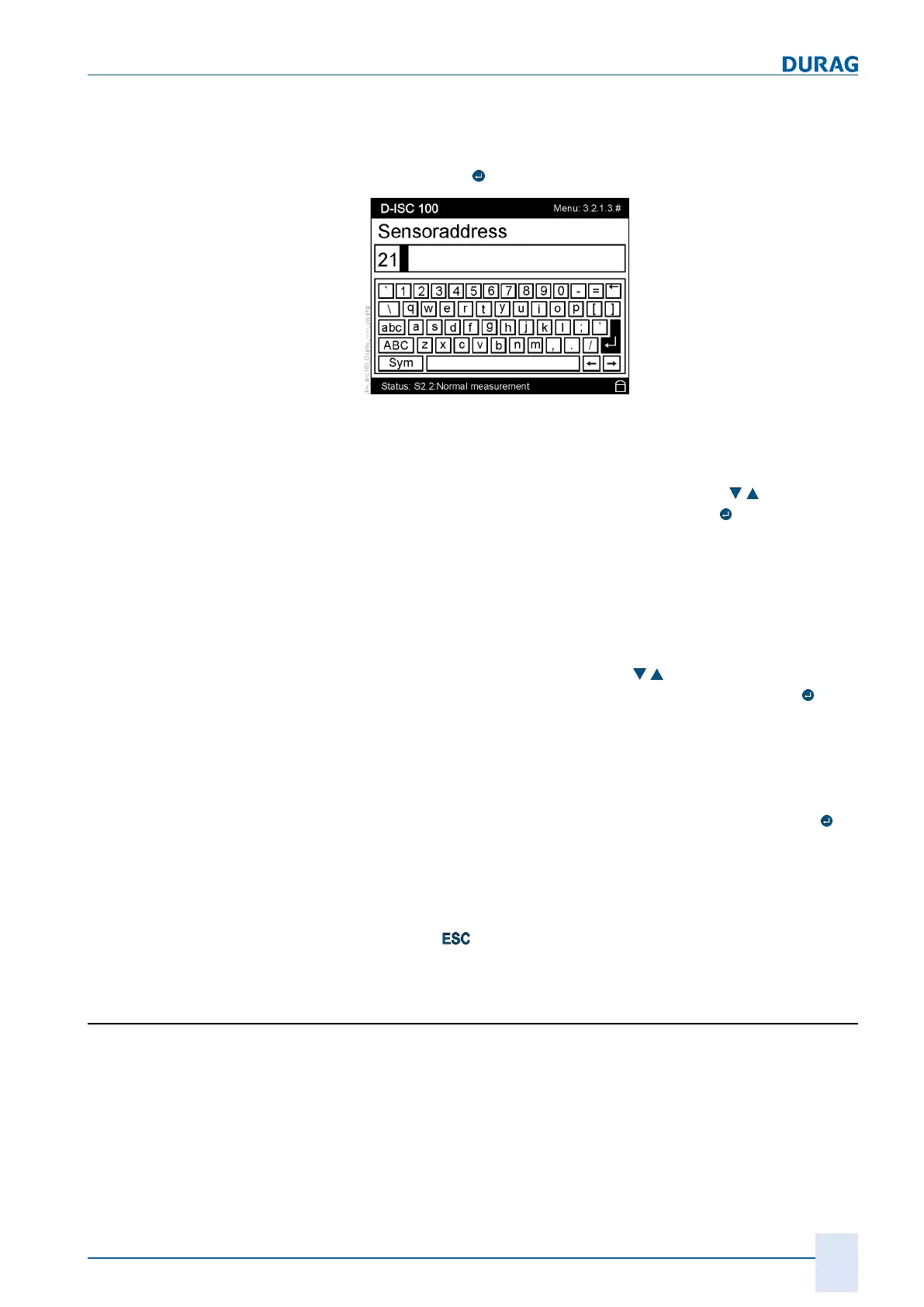15 | Examples of settings
D-ISC 100 x xx2
167
Once all characters have been entered correctly, confirm the
code by pressing the Enter key on the
virtual keyboard
(see fig-
ure below). To do so, select the Enter key on the virtual keyboard
and press the
key on the
keypad
on the housing.
Fig.15.19: Sensor address menu 4.2.1.S3.# On-screen keyboard Enter key
If a sensor is found at the specified address, the D‑ISC100 will
show the information read out there (device name and serial
number) in the info area of the display. The new sensor is then
selected by using the arrow keys on the keypad
to press the
"Add" button. Confirming the selection with the
key adds the
sensor to the list.
Scan
If the device address is not recognised, the D‑ISC100 can also
search for it. When doing this, the address range (1-247) is
scanned. If the address has already been specified as 100, the
range 100 to 247 will be scanned. The scanning operation may
take a few minutes.
Use the arrow keys on the keypad (
) to move to the "Scan"
button, and activate the automatic search by pressing the
key.
A found sensor is displayed. The D‑ISC100 waits for the user's
response during the scan. The new sensor can be added to the
list by pressing "Add" once it has been selected. The detected
sensor may already be available. By way of assessment, com-
pare the DURAG Modbus addresses and the displayed serial
numbers. Selecting the "Scan" button and then pressing the
key again continues the search (without loading the sensor).
In the "Info" area in the lower part of the display, the data read
from the respective sensor is displayed against the sensor name
and serial number.
Press the
key to return to the standard display (it may be ne-
cessary to press it several times).
15.8 Examples: Parameterising sensors
The D‑ISC100 allows sensors to be parameterised in a similar
way to parameterising with the software D‑ESI100. In order to
parameterise a connected sensor via the D‑ISC100, the sensor
in question will need to have been recognised by the D‑ISC100
(see 15.7 Example: Adding a sensor [}165]). Similarly to the pro-
cedure for parameterising using the software D-ESI 100 [}203], a
distinction is made between specific and common parameters.

